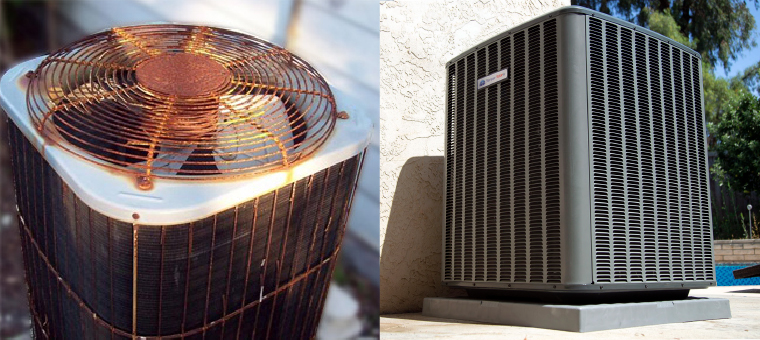How to Improve Air Quality in Your Home
Are you looking for ways to better the air quality in your house? Read here to learn how to improve air quality in your home.
According to the U.S. Environmental Protection Agency (EPA), the concentrations of certain pollutants are often two to five times higher indoors than outdoors. Most Americans spend around 90% of their time indoors, so this is definitely something to consider!
Are you looking for ways to improve air quality in your San Diego home? There are many different steps you can take to purify the air around you and help your loved ones breathe more easily. Today, we’re sharing a few of the most effective ones.
1. Change Your AC Filter
Your HVAC system works hard to maintain a comfortable temperature inside your house at all times. As it cycles through the air, it helps filter out common pollutants, from mold and pollen to tobacco smoke. Over time, it can become clogged and dirty.
While most manufacturers recommend that you change them once a month, one survey shows that only 18% of Americans follow that rule. In fact, 29% don’t change their filters at all. Not only does that wear down your HVAC system by requiring it to work overtime, but it also impacts your interior air quality.
Remember to change your filters according to the timeline on the packaging. If you are allergy-prone or live in an area with a higher degree of pollution, you may need to change them more often.
2. Install an Air Filtration System
Also known as air purifiers, air filtration systems are portable devices that use internal filters and fans to pull unwanted pollutants and airborne particles from the air in a room. This includes pollen, dust, bacteria, and other contaminants. Then, the air is re-circulated back into the room.
This entire process will repeat multiple times in one hour, which keeps your indoor air quality at a consistently pure level. The size of the air purifier you need will depend on the room you’re using it in. It should be appropriately scaled to be effective.
When shopping for a filtration system, look for ones that utilize HEPA filters. These particular filters are known to remove more than 99.9% of the particulates that pass through them, including:
- Allergens
- Bacteria
- Viruses
- Dust
- Chemical compounds
Want to skip the shopping and head straight to the best source? We offer advanced Air Filtration Systems that include a high-efficiency air conditioner, air filter, thermostat, MicroPure® Home Active Air Purifier, and a UV light!
3. Use an Air Ionizer
Another household device that can help improve your indoor air quality is an air ionizer. Instead of using a filter, these machines remove airborne particles through the use of negative ions.
How does it work?
Put simply, air ions are simply invisible molecules, floating around in the atmosphere with an electric charge. Ions can be either positive or negative. Negative ions have gained an electron, while positive ones have lost one.
When you use an air ionizer, it releases more negative ions into the air. This process is known as deionization. Those negative ions attach to the tiny contaminants in the air and give them an electrical charge.
This causes the particles to clump together and become heavier. Eventually, they will fall, landing on the walls, ceiling, floors, and other surfaces of your home. When they’re grouped together, it’s easier to see them and clean them up.
4. Check Your Air Ducts
The ducts in your HVAC system help distribute hot and cold air throughout your home, keeping every room comfortable. Just like your filters, they can get dirty over time, collecting dust, pet dander, mold, and other contaminants. In addition to keeping them clean, it’s also important to make sure they’re properly installed.
If they’re not correctly set up and maintained, there’s a chance that your air ducts could spread contaminants from one part of your house to another. A professional can inspect these areas and make sure they’re clean and working well!
5. Clean Your Carpets and Rugs
Soft floor coverings help our homes feel warm and cozy. However, carpets and rugs can be some pretty serious offenders when it comes to trapping contaminants like pet dander and dust.
Their fibers tend to trap and hold particles, and you can’t depend on a once-monthly vacuum spree to keep them clean. Take the time to clean them once a week, and you’ll all breathe easier. Today, you can even find household vacuums that come equipped with HEPA filters, so you know you’re getting a good, deep clean.
6. Use Your Gas Stove Vent
When it’s time to fire up your gas stove, you might not always remember to turn on the vent above. However, it’s important to realize that many indoor air pollutants trace back to the kitchen.
Stoves can release harmful contaminants into the air when you use them, including nitrogen dioxide and carbon monoxide. While gas stoves emit the highest levels, electric burners can produce them, too. When these particles enter the air, they can become absorbed into your bloodstream.
The next time you’re cooking, remember to look up and turn on the vent. You can also open a nearby window to help the air filter and flow out.
7. Add Dehumidifiers
When the moisture levels are up in your home, it creates a pleasant breeding ground for mold, mildew, and all kinds of icky bacteria. If this is an issue at your house, you may notice that respiratory issues (including asthma and allergies) happen more frequently. While humidity and moisture can accumulate during any time of the year, summers tend to be particularly troublesome.
To keep your levels in check, add a few strategically-placed dehumidifiers around your home. This might mean installing one in the living room, one in your bedroom, and one in the basement. There are lots of models to choose from, so find one that’s sized to fit your space.
Improve Air Quality, One Step at a Time
As a San Diego resident, you have plenty to explore and enjoy beyond your front steps. However, you’re likely to spend most of your time inside!
That’s why it’s so important to improve air quality within your home. From dehumidifiers to deionization, there are many different steps you can put into place to help purify and cleanse the air around you.
At Semper Solaris, we’re dedicated to helping our customers breathe easier. From AC products and installation to air purification systems, you’ll find it all. Check out the products and services we offer and contact us to book an appointment!

